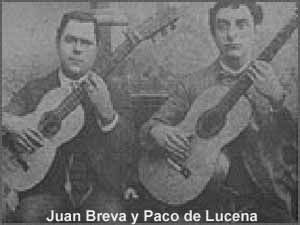|
Ricardo -> RE: Cultural Flamenco Questions Thread (Nov. 4 2013 17:45:32)
|
quote:
ORIGINAL: mark indigo
quote:
I can't argue either way. I don't know, but this is his quote from page 231: "Fernando de Triana writes that a hundred years ago [sic], before the cejilla was invented, singers always had to force their voices down or up to the key of the open guitar. That is how, he claims, the harsh and forced voice became a flamenco convention." (sic is in his quote, not mine)
The context of this quote comes in the appendix where he briefly explains the differences between classical guitar and flamenco guitar. This final sentence is merely a point about the cejilla.
Before the invention of the cejilla flamenco guitarists played using all twelve keys, according to the pitch of the singers' voices. At this time a phenomenally high level of virtuoso playing and knowledge of the fretboard, scales, intervals, arpegios, chords, harmony, transposition etc. was considered normal among flamenco guitarists.
All of this occurred before the advent of recording technology, and as flamenco communities were both illiterate and hermetically closed there are no written or audio records of the accompaniments and falsetas of this era.
With the invention of the cejilla, the flamenco guitar went through a period of atrophy, degeneration and simplification. Many guitarists chose to use only a few keys and use the cejilla to change the pitch for singers. For a while many retained the old knowledge in private and used the fashionable "por medio" and "por arriba" (A and E Phrygian) in public, but eventually the use of most other keys died out even in private gatherings.
The singers didn't care either way, and even encouraged the new more limited style as it restricted the virtuoso displays guitarists were often prone to, such as modulating around the cycle of fifths. Singers also found it easier to latch onto the similar sound of only a few sets of chord shapes and their associated sounds transposed with a cejilla.
It is only recently that guitarists have started once again to break out of the confines of just a few keys, much to the dismay of so-called "purists", though they have yet to reach the virtuosic heights of the much earlier golden age of the guitar.
Where did you gather that from? Never heard it in my freakin life, and also disagree that this was truly the case.
Ricardo
|
|
|
|

